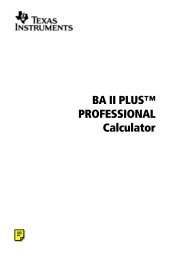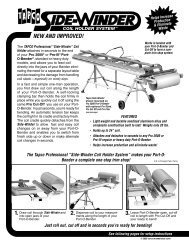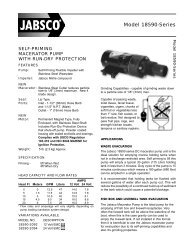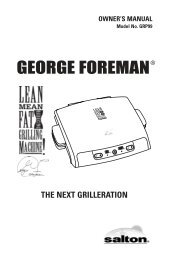MIXMASTER® STAND MIXER BATTEUR DE PIÉDESTAL ...
MIXMASTER® STAND MIXER BATTEUR DE PIÉDESTAL ...
MIXMASTER® STAND MIXER BATTEUR DE PIÉDESTAL ...
Create successful ePaper yourself
Turn your PDF publications into a flip-book with our unique Google optimized e-Paper software.
DOUGH RISING TIPS<br />
A large, well-greased, glass mixing bowl<br />
is an excellent container in which to<br />
raise or proof yeast dough. The ideal<br />
temperature is 85°F / 30°C in an area<br />
that is draft free. Cover with a light cloth.<br />
The final rising should be after the<br />
dough has been shaped and placed<br />
on the greased baking sheet or pan<br />
recommended in the recipe. Again,<br />
cover the rising dough and place<br />
in a warm, draft-free area.<br />
If you live in a high altitude area, yeast<br />
breads will require a shorter rising time.<br />
Allow the dough to rise only until it has<br />
doubled in size. Slightly less flour<br />
should be used because flour is dryer<br />
at higher altitudes.<br />
HOW TO PUNCH DOWN YEAST DOUGH<br />
1. Plunge fist into center of risen<br />
dough to punch out excess air.<br />
2. Fold outer edges over into center.<br />
Turn dough over and let rise until<br />
doubled, if recipe directions<br />
so specify.<br />
12<br />
HOW TO SHAPE DOUGH FOR A LOAF PAN<br />
1. Using a rolling pin, roll dough<br />
into a rectangle.<br />
2. Roll dough into a loaf, starting<br />
from narrow end.<br />
3. Flatten ends with sides of hands,<br />
as shown.<br />
4. Pinch along seam to seal.<br />
5. Fold ends under and place seam-side<br />
down in a well-greased loaf pan.
















